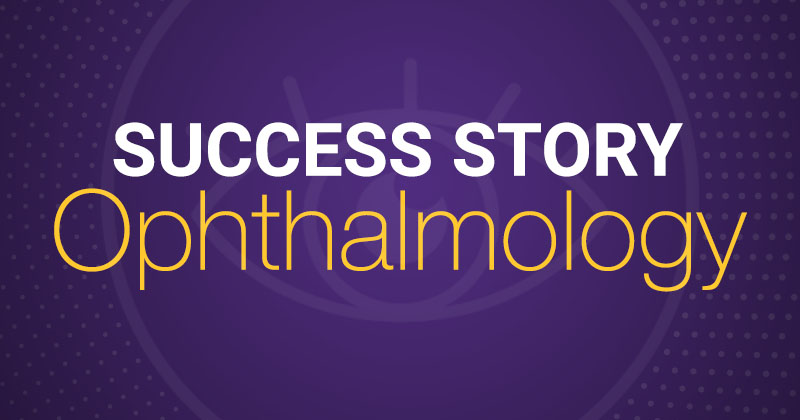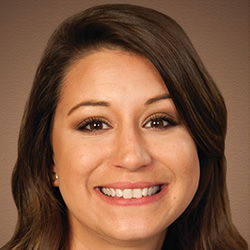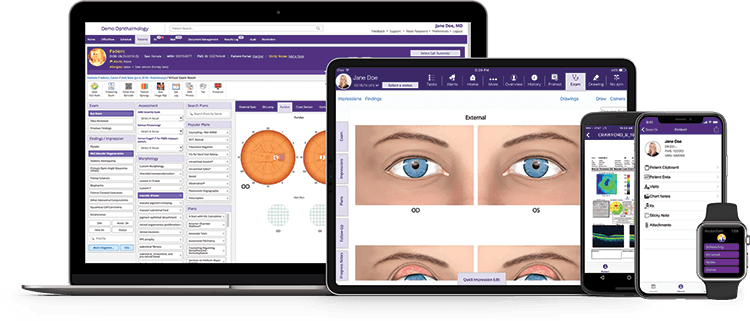Thomas Eye Group Switches EHR Systems and Successfully Implements the modmed® Ophthalmology Suite

Case Study

Practice Goals
- Implement ophthalmology software that supports growth
- Engage staff and get them excited about the change
- Increase efficiencies
- Improve doctor and staff morale
Key Benefits Experienced
- Streamlined processes and workflows
- Maintained patient volume during pandemic
- Saved time with Patient Reminders
- Developed long-term relationship with Modernizing Medicine®
Learn how Thomas Eye Group prepared and executed a smooth ophthalmology EHR and practice management implementation.

“EMA and the Practice Management system checked all the boxes we needed and would best support our overall goals. In the weeks leading up to go-live, we took a creative approach to getting our employees excited, and made sure they understood the value that this change would bring to our organization. Having a detailed implementation timeline, knowledgeable trainers and a dedicated staff were a recipe for success during our implementation.”
‒ ASHLEY TIBBITS, SENIOR PROJECT MANAGER OF IMPLEMENTATION
Thomas Eye Group is a full service eye care provider with offices in nine locations around the greater Atlanta area offering routine eye exams, glasses, contact lenses, LASIK, as well as medical, surgical and cosmetic services. Many Thomas Eye Group physicians have undergone additional, highly specialized subspecialty training to offer cataract surgery, and oculoplastic, pediatric, cornea, retina and glaucoma services.
As Thomas Eye Group grew to over 30 providers and expanded its locations, their previous server-based EHR system did not offer the stability they needed to support growth. After evaluating 12 different systems, the practice selected EMA®, the award winning* ophthalmology EHR system, and ophthalmology Practice Management system from Modernizing Medicine. Senior Project Manager of Implementation Ashley Tibbits discusses how the group prepared for their ophthalmology EHR implementation and got their staff excited about the change, and offers advice for others who may be considering switching systems.

A GROWING PRACTICE NEEDS A STABLE SYSTEM
Prior to implementing EMA and Practice Management, we used a server-based system for almost 15 years. Lack of stability was the driving force for considering switching platforms. As our organization grew, the additional locations and number of users logging into servers bogged down the system. There were many days when the system ran extremely slowly, or would shut down completely, forcing us to revert back to paper.
It became very challenging to provide the exceptional patient care that we strive for on a daily basis. We decided to look at other solutions that would support growth with the additional goals of decreasing patient wait times, enhancing patient satisfaction, increasing efficiencies and improving doctor/staff morale.
AN EXTENSIVE SEARCH UNDERWAY
We researched various systems for compatibility and eliminated the platforms that were server-based and not ophthalmology-specific. Then, we participated in product demonstrations from a handful of vendors and narrowed it down to Modernizing Medicine and another popular ophthalmology software vendor. We visited practices that were using each system and observed workflows. Finally, we had an entire review team from various roles within our organization outline the pros and cons of each platform. It was decided that the all-in-one ophthalmology software from Modernizing Medicine checked all the boxes we needed and would best support our overall goals.
The robust features EMA and Practice Management include were important, however, the long-term relationship Modernizing Medicine wanted to develop with us was the icing on the cake.
CHANGE CAN BE FUN AND EXCITING
It was important to us that our staff was excited about the implementation of a new ophthalmology software and we wanted to make this the most positive experience it could be. We started with sending out an employee communication announcing the plan to change systems, which listed our current challenges and outlined our future goals. to support the “why switch?”question. We had the upper hand in receiving staff buy-in, given all the challenges we faced with our previous system, which everyone felt.
During our quarterly town hall meetings, our executive leadership discussed our future goals and how Modernizing Medicine would help us achieve them. They focused on the positive impact the switch would have on our entire organization, while outlining the key features EMA and Practice Management offered that would benefit not only our team, but also our patients. This was another avenue that got our team engaged and excited about the change.
In the weeks moving closer to training and implementation, we took a creative approach to further generate positivity and excitement. Bi-weekly reports containing fun facts about Modernizing Medicine and links to client case studies and video testimonials that highlighted proven success stories, were sent to our team.
We wanted to make this much-needed change as fun as possible for our staff. During training, we held raffle drawings throughout the day and gave away some great prizes. We included themed days for all of our employees to keep them engaged in a fun way. We also held a weekend clinic for family and friends, enabling our providers to practice in EMA’s sandbox environment before going live. Our employees wore their favorite sports jerseys, and we held contests and gave away prizes. This was a fun way to practice and learn, while also keeping the excitement going. We focused a lot on our employees and the benefits we’d experience by switching systems, which helped reduce some of those natural anxieties.
A RECIPE FOR SUCCESS
Having a detailed implementation timeline, knowledgeable trainers and a dedicated staff were a recipe for success during our implementation. We identified and trained superusers and physician champions early to establish efficient workflows. This was important because they are the subject matter experts and in the trenches daily, so they understood what the clinic’s needs were operationally. We communicated with the Modernizing Medicine trainers about the type of workflow we wanted to implement, so our staff felt like they received training that was catered to us.
The Modernizing Medicine trainers were flexible and receptive as questions arose, and worked closely with us to get answers. We worked through various scenarios together in the EMA sandbox environment, which provided an in-depth understanding of the ophthalmology EHR. This allowed us to think through some of the challenges we might face during go-live and be prepared.
ONGOING BENEFITS
Since go-live, we’ve been pleased with the system’s stability and it has allowed us to maintain our patient volume through the pandemic. The physicians find EMA easy to use because it remembers their most common diagnoses. Having a single sign-on, cloud-based platform gives us the ability to access information remotely, which is so helpful during the pandemic to help us navigate the limitations of social distancing and the increase in telehealth visits.
We also utilize Patient Reminders, which is another extremely beneficial patient engagement tool. For example, during the onset of COVID, we used on-demand messaging daily as we closed clinics and canceled appointments to communicate we were available for telehealth visits. We didn’t have staff accessible to make all of those phone calls. We have nine locations and see around 1,100 patients per day, so having that tool was very helpful.
The support and various tools Modernizing Medicine provides within the all-in-one ophthalmology software has been very helpful and beneficial to Thomas Eye Group.
Disclaimer: The statements and conclusions contained herein reflect the opinions of Ashley Tibbits and not those of Modernizing Medicine. Modernizing Medicine makes no representations or warranties as to the accuracy of any such information.